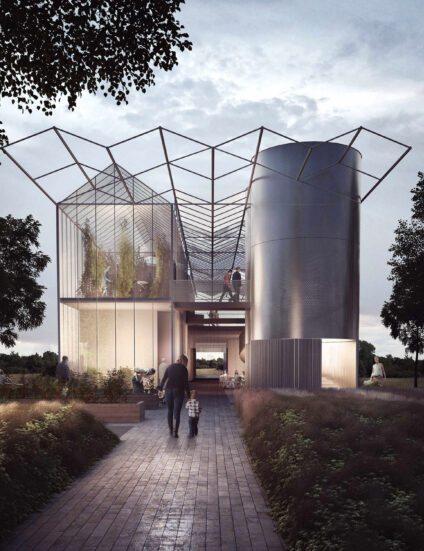Designed around the theme of ‘Feeding the Planet, Energy for Life’, our shortlisted entry for the British Pavilion at the World Expo 2015 in Milan was a working model of a sustainable food production system that included industrial glasshouses, storage barns, and grain silos.
The World Expo is a large, international exhibition designed to showcase the achievements and contemporary thinking of over 130 nations across technology, innovation, culture, traditions and creativity.
For the 2015 event, the British pavilion was led by the UK Trade and Investment department—a government department that existed between 2003 and 2016 to assist UK-based businesses with their success in international markets. Working with the Expo’s food production theme, the pavilion was based on the idea of, ‘Grown in Britain, Shared Globally’. Celebrating how British agriculture, technology and food have positively impacted the world, the pavilion demonstrated how the industry has helped to provide solutions to global problems and sustainably provided more with less, from field to fork.
Our pavilion entry was designed to be a real life demonstration of an ecological, self-sustaining system. Constructed using industrial agricultural building components, the cluster of buildings was arranged to form a facsimile of the British grown landscape.
These buildings included functioning industrial glasshouses, storage barns and grain silos—all structures in our constructed landscape that allow for the sustainable production of food. A photovoltaic roof provided shelter and energy to the site.
Live, real-world experiments would allow visitors of all ages to engage, contribute and join the debate, creating entertaining experiences through technology, food and materials that bring the British success stories to life.
We were one of eight teams shortlisted to put forward a proposal for the pavilion, which also included musicians, artists, sculptors and farming technologists.

